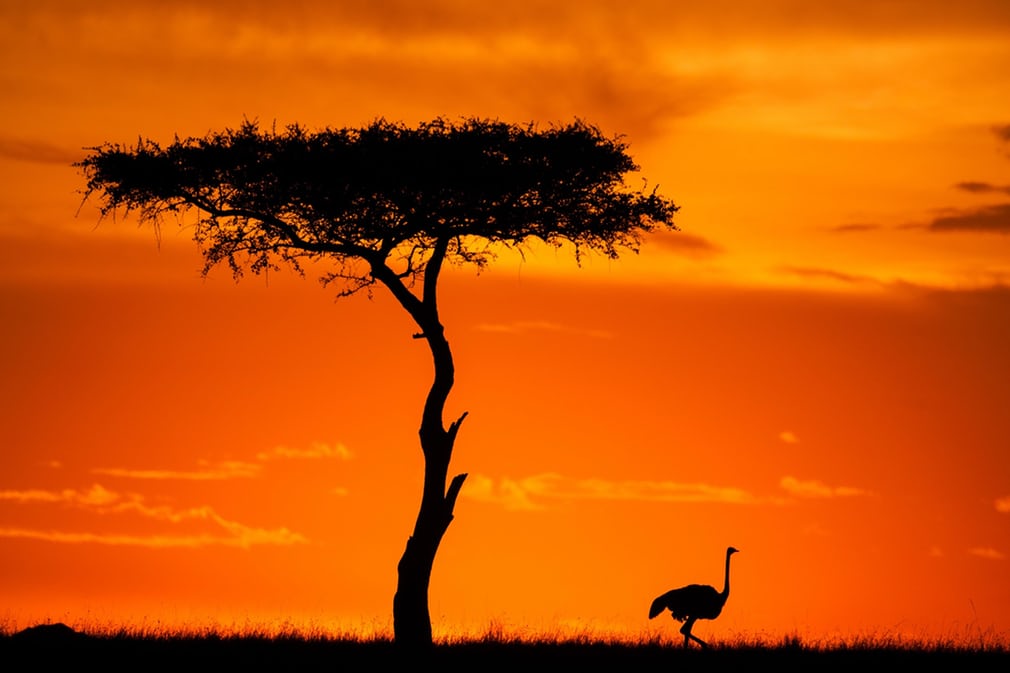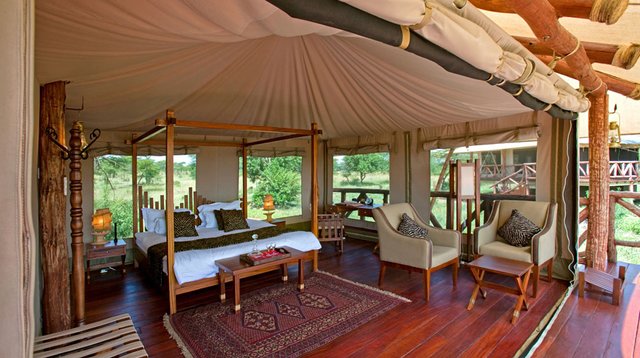The Masai Mara: 'It will not be long before it's gone
As lodges and shanty towns proliferate in Kenya's Masai Mara, drastic and urgent steps are needed to save this beautiful game reserve from becoming an environmental disaster .

This is my Story in Masai Mara ...
Our vehicle comes to an abrupt stop. "There, now watch," says Josphat, my exacting young Masai guide. We cut the engine and the silence is acute. Josphat points out a cheetah's head in an ocean of golden grass. One minibus has already pulled up on another sandy track a few hundred metres away and four heads are craning out of the roof. We sit and watch for the cheetah. All of a sudden white minibuses crest the horizon in droves. We are in a stampede. Eight of them surround us. Within five minutes we have counted 30, the drivers communicating via radio to make sure their clients tick off "the big five". A cheetah will never kill like this; its prey will have been alerted. And if it has killed, the vehicles will make it blind to a subsequent hyena attack. But this cheetah is now nowhere to be seen. Undeterred, the minibus drivers start ploughing into the long grass. Eventually they give up. I ask if this happens often. Every day, Josphat says.
osphat is a member of the Kenya Professional Safari Guides Association, which means he knows the Latin names and mating rituals of every animal in his domain. He is 27, small, intelligent and deeply serious about his work. He is accustomed to tracking animals and avoiding humans, but he is also proving adept at the inverse, showing me the "real" Masai Mara. One of the greatest natural spectacles on earth is under way. More than a million hungry wildebeest are on their way from Tanzania to Kenya's Mara National Reserve to raze tons of sweet red-oat grass. Primordial gnus are the stars of the show, but in supporting roles are a few hundred thousand zebras and half a million Thomson's gazelles; then there are the resident crocodiles, lions, hyenas, leopards and cheetahs.
Their show is in danger of being upstaged. Every year, thousands upon thousands of tourists descend on the Masai Mara to witness the migration. The resident human population is increasing; lodges are proliferating. Rampant corruption means money is not filtering down to the Masai population, who are increasingly turning to charcoal and arable farming to make ends meet. In short, mankind is in danger of squandering one of the most important habitats left in the world.

"Today it's lodges, lodges, lodges. Everybody wants a lodge," Josphat says in despair. Some of those inside the reserve secure leases by greasing palms; others pay wardens for illegal permits, or start up as temporary camps and never leave. Outside the reserve it's easier. The first Chinese lodge is under construction on the south-eastern edge of the reserve. Its flat-pack cabins travelled 5,000 miles from China to be constructed on cleared forest. The minister for tourism said recently that of 108 tourist operations in the Mara area, only 29% were legal. Jake Grieves-Cook, a former chairman of the Kenya Tourist Board who owns a number of camps, estimates there are 7,000 tourist beds in the Mara ecosystem. If this is true, then in the past 10 years, despite a four-year moratorium on development, the number has almost trebled.
Kenya's economy is heavily reliant on tourism and the core area, the Mara National Reserve, generates an estimated £13m each year. The place projects a timelessness that speaks to notions of man's origins and the beginnings of time. But it also epitomizes a modern conflict over land and resources playing out across Africa today.
In battling for their rights, the Masai are seen as greedy by many conservationists, but most are not, an exasperated Josphat says: they just want their rightful share. The Masai occupied most of western Kenya at the turn of the 20th century, but disease, massive evictions by British colonialists and civil war reduced them to only 0.5% of the population. Centuries of survival in harsh lands gave them a strong sense of mutualism, but a culture of cronyism now pits the Masai against one another. The uneducated minority are represented, and exploited, by an educated few. There are countless lawsuits languishing in the courts and a number of unsolved, politically motivated murders. Paramilitary police have carried out forced evictions by night. People are bitter, and trust has eroded. Somali émigrés run thriving businesses in the Mara, because the Masai trust them more than Kenyan tribes.